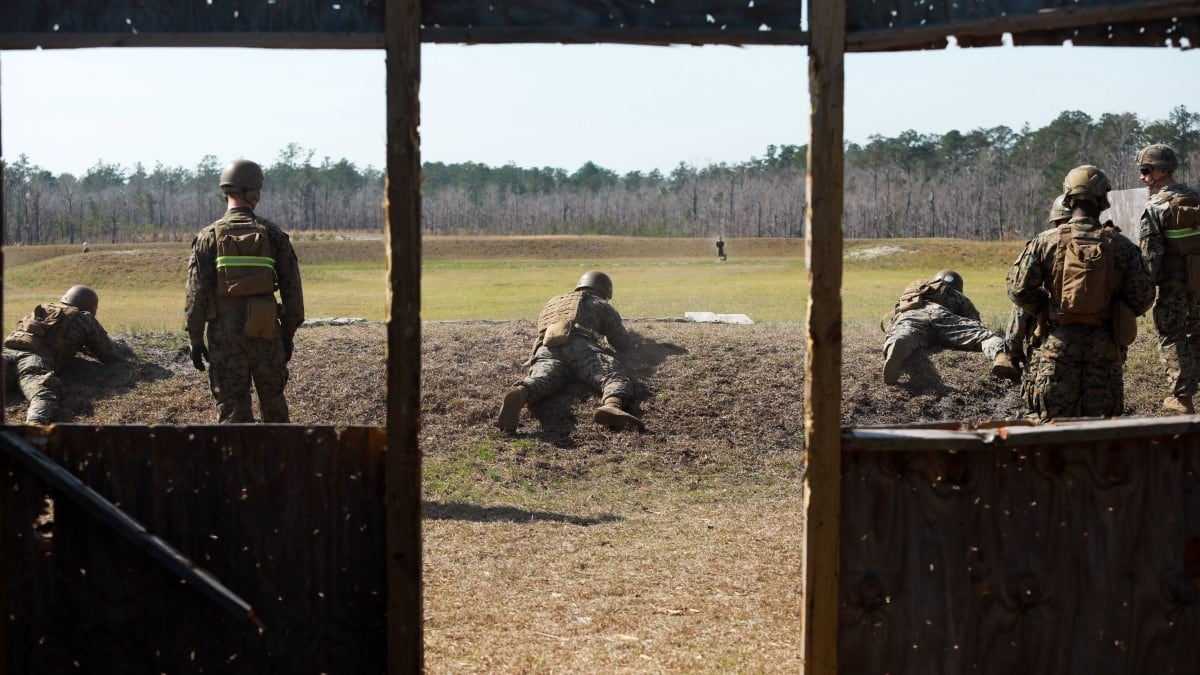The Marine Corps has made the combat instructor job a special duty assignment once more, effectively allowing those instructors to sidestep the sometimes-dreaded recruiter or drill instructor jobs.
Each year, a portion of Marine noncommissioned officers are given special duty assignments, which take them out of their regular jobs for a few years to perform other duties on behalf of the Corps. Now, the combat instructor job, which entails training Marines in combat skills, counts as a special duty assignment.
“It’s an extremely rewarding duty because you actually get to affect and to teach the warfighting skills that all Marines learn through the entry-level training pipeline, and it’s really critical for the operational readiness of the force,” Gunnery Sgt. Tyler Stokes, the enlisted assignments monitor for the combat instructor community, said in a video the Marine Corps recently posted to LinkedIn.
Marines get plucked from their regular jobs and placed into special duty assignments through the annual Headquarters Marine Corps Special Duty Assignment Screening Team screening process, often called HSST for short.
The Marine Corps itself said in an administrative message in 2023, “A successful SDA tour is a hallmark of a competitive Marine and makes him or her exceptionally qualified for promotion.”
The other special duty assignments are recruiter, drill instructor and Marine security guard detachment commander. Before a rule change that was announced in 2017, combat instructor and Marine security guard watchstander also counted as special duty assignments.
After that change, those two jobs became Type 1 screenable billets, a category that also includes Marine Corps security forces guards, staff noncommissioned officer academy faculty advisors and curriculum developers, and Marine special operators, among others, according to Marine spokeswoman Capt. Sarah Eason.
“Designation as a Special Duty Assignment increases the staffing priority of this duty, ensuring maximum fill of available billets,” Eason said of the recent redesignation of the combat instructor role via email May 3.
A 2019 analysis by the Marine Corps of the impact of special duty assignments — which at the time didn’t include combat instructor — on Marines’ lives found they were correlated with better promotion chances but also with higher rates of divorce, addiction and suicide attempts.
“Due to increased responsibilities and duties outside of one’s normal occupational field, SDA tours are often viewed as a Marine’s most stressful noncombat tour,” the analysis stated.
Now that being a combat instructor is a special duty assignment again, Marines who complete that role won’t end up on future HSST lists, according to Eason.
For the next special duty assignment season, fiscal year 2026, combat instructor may be an option for Marines who end up on the list “but will be subject to availability after the volunteer period,” Eason said.
“Unlike other SDAs, there are a limited number of Combat Instructor billets open to any primary military occupational specialty, and these routinely fill with volunteers,” the spokeswoman added. “The preponderance of Combat Instructor billets requires an infantry primary (military occupational specialty), so Marines in this field will likely be able to request Combat Instructor duty during the HSST.”
As a special duty assignment, the combat instructor role will come with incentives that include easier promotions and choice over a next duty station, according to Eason. Combat instructors will continue to receive special pay.
A plan to make the combat instructor job a special duty assignment again has been in the works since at least 2021, as the Corps planned to lengthen the infantry course from nine to 14 weeks, creating a demand for more instructors. Training Command did not respond by time of publication to a Marine Corps Times question about the current length of the course.
Irene Loewenson is a staff reporter for Marine Corps Times. She joined Military Times as an editorial fellow in August 2022. She is a graduate of Williams College, where she was the editor-in-chief of the student newspaper.




